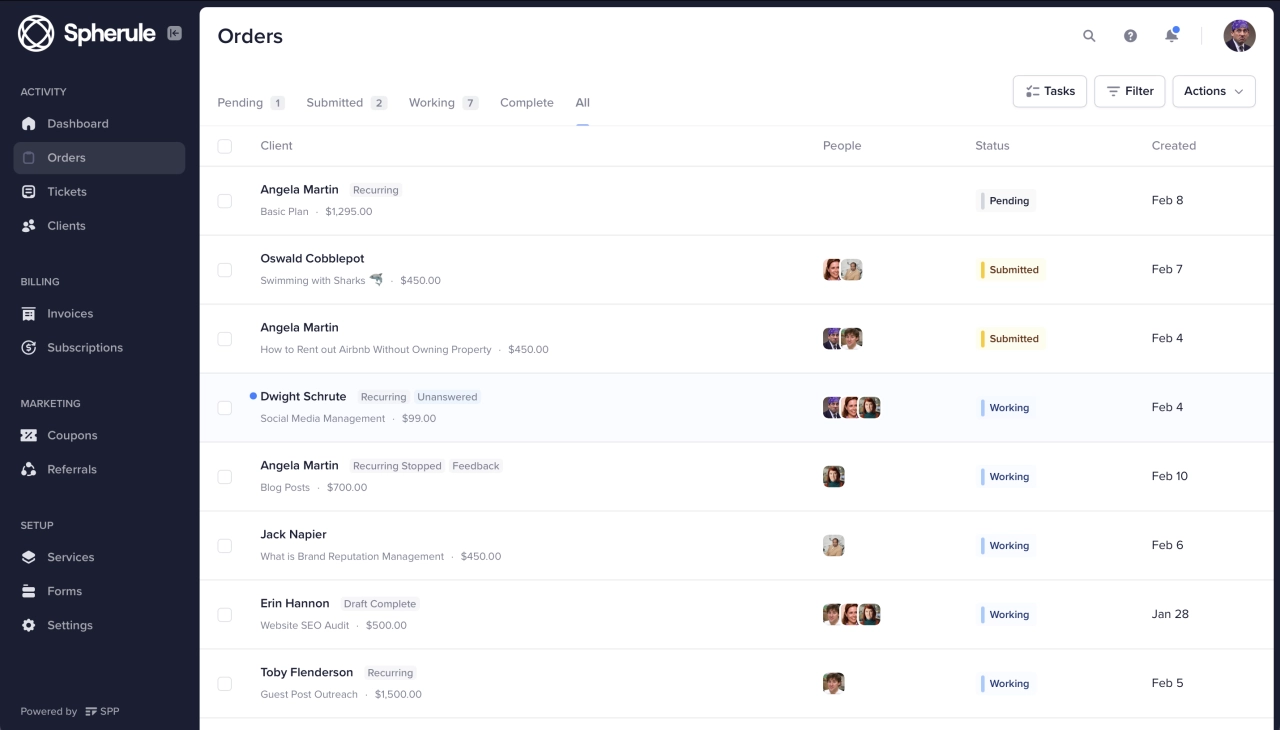Pricing Calculator for Agencies
Calculate optimal pricing and generate attractive pricing tiers
Basic Inputs
Average cost per hour for your team
Total hours needed for the project
Percentage to add for overhead costs
Your desired profit margin percentage
Pricing Model
Charge based on time spent
Set price for the whole project
Price based on client ROI
Additional percentage to account for scope uncertainty
Estimated value your work will deliver to the client
Percentage of created value you capture as your fee
Frequently Asked Questions
- What is the purpose of this calculator?
-
This calculator helps marketing agencies determine optimal pricing based on costs, profit margins, and value-based pricing strategies . It's designed to eliminate guesswork from pricing decisions and provide data-driven recommendations that maximize profitability while remaining competitive.
- Who should use this calculator?
-
This tool is ideal for marketing agencies, creative firms, consultancies , freelancers, and service-based businesses that need to price client projects. It's particularly valuable for teams transitioning from hourly to value-based pricing models.
- How accurate are the calculator's recommendations?
-
The calculator provides data-driven recommendations based on the inputs you provide. Its accuracy depends on how realistic your cost estimates, hourly rates, and value assessments are. We recommend refining these inputs over time as you gather more data from completed projects.
- What pricing models does the calculator support?
-
The calculator supports three pricing models :
- Hourly Rate: Traditional time-based billing
- Fixed Price: Project-based pricing with built-in risk buffers
- Value-Based: Pricing based on the estimated return on investment for your client
- How do I determine the "Value to Client" for value-based pricing?
-
To estimate client value, consider:
- Potential revenue increase from your work
- Cost savings or efficiency gains
- Risk reduction or compliance benefits
- Strategic advantages over competitors
- Emotional benefits (brand reputation, reduced stress, etc.)
Always discuss these value drivers with clients to validate your assumptions.
- How does the tiered pricing system work?
-
After calculating a base price, the calculator generates three pricing tiers :
- Basic (75% of the base price): Core deliverables with minimal support
- Standard (the recommended price): Complete solution with standard support
- Premium (150% of the base price): Enhanced solution with priority support and additional features
Each tier is customized with different features and profit margins based on your pricing model.
- Can I customize the tier multipliers for my premium pricing ?
-
While the calculator uses standard multipliers (75% for Basic, 100% for Standard, 150% for Premium), you can adjust these based on your market research and competitive positioning. Consider your client base's willingness to pay and the cost structure of each tier.
- What should I include in "Team Hourly Cost" for accurate agency KPIs ?
-
Your team hourly cost should include:
- Direct salary or contractor rates
- Employment taxes and benefits
- Equipment and software costs
- Workspace costs allocated per team member
- Training and development costs
This represents the true cost of having your team available to work on projects.
- How do I determine the right "Overhead Percentage" for cost-based pricing ?
-
Your overhead percentage should account for:
- Administrative staff salaries
- Office space and utilities
- Marketing and sales expenses
- Professional services (accounting, legal)
- Insurance and other fixed costs
Calculate this by dividing your annual overhead costs by your annual direct labor costs.
- What is a "Risk Buffer" and how should I set it for project-based pricing ?
-
The risk buffer is an additional percentage added to fixed-price projects to account for scope uncertainty. Set your risk buffer based on:
- Project complexity (higher complexity = higher buffer)
- Client communication history (difficult clients = higher buffer)
- Experience with similar projects (less experience = higher buffer)
- Clarity of requirements (vague requirements = higher buffer)
Typical risk buffers range from 10-30%.
- How should I interpret the "Profit Margin" results for competition-based pricing ?
-
The profit margin represents the percentage of your price that remains after covering all costs. Industry benchmarks for healthy agencies typically show:
- 15-25%: Sustainable but minimal growth
- 25-40%: Healthy profitability allowing for investment
- 40%+: Premium positioning with significant pricing power
- What if the recommended price seems too high?
-
If the price seems too high:
- Verify that your inputs are accurate
- Consider if you've overestimated hours or complexity
- Evaluate whether you can deliver the same value more efficiently
- Assess if you need to better communicate value to justify the price
- Consider offering a scaled-back version as your Basic tier
- What if the recommended price seems too low for my productized services ?
-
If the price seems too low:
- Check that you've included all costs
- Evaluate whether your hourly rate reflects your expertise
- Consider if you're undervaluing the client benefit
- Assess whether you've accounted for all project risks
- Explore whether your overhead percentage is accurate
- How should I implement these pricing recommendations ?
-
- Test the new pricing structure with new clients first
- Consider piloting with select existing clients during renewal
- Create clear, visually appealing pricing documents
- Train your team on communicating the value at each tier
- Track conversion rates and average deal sizes
- Refine based on client feedback and performance data
- Can this calculator help with retainer pricing?
-
Yes. For retainer pricing :
- Use the hourly model for time-based retainers
- Use the fixed-price model for deliverable-based retainers
- Use the value-based model for performance-based retainers
- Generate tiers with differing service levels or response times
- Consider monthly, quarterly, and annual pricing options

You're in good company. We've helped agencies like yours sell $500M+ in services.


